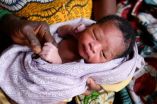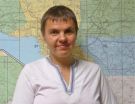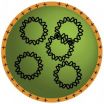(Press-News.org) WASHINGTON D.C., April 29, 2014 -- Nearly 90 years after Werner Heisenberg pioneered his uncertainty principle, a group of researchers from three countries has provided substantial new insight into this fundamental tenet of quantum physics with the first rigorous formulation supporting the uncertainty principle as Heisenberg envisioned it.
In the Journal of Mathematical Physics, the researchers reports a new way of defining measurement errors that is applicable in the quantum domain and enables a precise characterization of the fundamental limits of the information accessible in quantum experiments. Quantum mechanics requires that we devise approximate joint measurements because the theory itself prohibits simultaneous ideal measurements of position and momentum -- and this is the content of the uncertainty relation proven by the researchers.
"Curiously, since Werner Heisenberg, one of the founders of quantum mechanics, gave an intuitive formulation of this principle, it was only recently that serious attempts were made to make the statement precise enough so that one could check its validity," said Paul Busch, Professor of Mathematical Physics at the University of York, who collaborated with Pekka Lahti of the University of Turku in Finland and Reinhard F. Werner of Leibniz Universität in Hannover, Germany on the work.
"Our method of defining the error and disturbance in quantum measurements enabled us to prove an error-disturbance trade-off relation just the way Heisenberg envisaged it," Busch said.
The first step was to prove an uncertainty relation for a special class of approximate joint measurements of the position and momentum; a class with nice symmetry properties. The main difficulty was then to find a way of reducing the most general case to this symmetric case. This involved a fairly complex chain of arguments using some deep ideas of advanced mathematics. Formulating and proving a family of measurement uncertainty relations for canonical pairs of observables resulted in one possible rigorous interpretation of Heisenberg's 1927 statements.
"We were able to define measures of error and disturbance as figures of merit characterizing the performance of any measuring device; thus, our measures describe how well a given device allows one to determine, for instance, the position of an electron, and how much it disturbs the momentum," explained Busch. "We believe that our approach is the first to provide error measures that are not merely mathematically plausible but more importantly, can be estimated from the statistical data provided by the measurement at hand, so that the numbers one identifies as "errors" are in fact indicators of the quality of the experiment."
This work is particularly timely and significant since some recent research calls the Heisenberg principle into question. The quantum mechanical inequality proposed by M. Ozawa in Japan, if its interpretation were correct, would suggest that quantum uncertainty might be less stringent than had been thought for the last 80 or so years. If these claims were tenable, it would seriously impact our understanding of the workings of the physical world. Busch, Lahti and Werner argue that this approach is flawed as Ozawa's inequality is meaningful as an error-disturbance relation only in a limited set of circumstances.
The results of this research -- a proof of a variety of formulations of measurement error (and disturbance) relations -- highlights the fundamental limits of measurements in quantum physics. Since modern technology has been progressing steadily to controlling smaller and smaller objects (e.g., nanotechnology, quantum computation, quantum cryptography), the time is approaching where device performance may confront the ultimate quantum limits. These results may, for example, corroborate the security of quantum cryptographic protocols insofar as these are based on the validity of the uncertainty principle and the Heisenberg effect.
What is next for this research? "Surprisingly, we are only just witnessing the beginnings of a systematic conceptualization of measurement error and disturbance," Busch said. "No doubt researchers will find interesting new error relations, for instance, based on entropic measures. It appears that the recent quantum uncertainty controversy has already inspired numerous researchers to start their own investigations in this area."
INFORMATION:
The article, "Measurement uncertainty relations" is authored by Paul Busch, Pekka Lahti and Reinhard F. Werner. It will be published in the Journal of Mathematical Physics on Tuesday April 29, 2014 (DOI: 10.1063/1.4871444). After that date it will be available at: http://scitation.aip.org/content/aip/journal/jmp/55/4/10.1063/1.4871444
ABOUT THE JOURNAL
Journal of Mathematical Physics publishes mathematical developments relevant for the formulation and solution of problems in physics and its applications. See: http://jmp.aip.org
Proving uncertainty: New insight into old problem
In 'Journal of Mathematical Physics,' international group of scientists provides first rigorous formulation supporting Heisenberg's famous 1927 uncertainty principle
2014-04-29
ELSE PRESS RELEASES FROM THIS DATE:
Poor QOL doesn't predict low survival in high-risk lung cancer patients undergoing surgery
2014-04-29
Toronto, ON, Canada, April 29, 2014 – Quality of life (QOL) is rarely reported in surgical publications, yet it can be an important metric that can be of use to physicians and patients when making treatment decisions. Prior studies of average-risk patients undergoing lobectomy suggested that low baseline QOL scores predict worse survival in patients undergoing non-small cell lung cancer surgery. The results of a multi-center, longitudinal study of high-risk lung cancer patients who underwent sublobar resection counters this idea, finding that poor baseline global QOL scores ...
Mother's diet affects the 'silencing' of her child's genes
2014-04-29
A mother's diet before conception can permanently affect how her child's genes function, according to a study published in Nature Communications.
The first such evidence of the effect in humans opens up the possibility that a mother's diet before pregnancy could permanently affect many aspects of her children's lifelong health.
Researchers from the MRC International Nutrition Group, based at the London School of Hygiene & Tropical Medicine and MRC Unit, The Gambia, utilised a unique 'experiment of nature' in rural Gambia, where the population's dependence on own grown ...
Genealogy and biogeography meet personalized medicine
2014-04-29
Biogeographical data is useful in screening for disease risk and drug sensitivity associated with certain ethnic groups. A team of researchers, including an investigator from Children's Hospital Los Angeles, has developed a tool to accurately identify the biogeography of worldwide individuals. Previous tools were accurate in identifying place of origin within homogeneous European populations but highly inaccurate for places with significant immigration, such as the U.S.
Tatiana Tatarinova, PhD, of The Saban Research Institute of Children's Hospital Los Angeles, Eran ...
Screening out: What are parents doing to limit screen time for young children?
2014-04-29
ANN ARBOR, Mich. – About 25 percent of parents who have children aged two to five say their children get three or more hours of entertainment screen time a day, well beyond recommended limits, according to a new poll from the University of Michigan.
In the latest University of Michigan Mott Children's Hospital National Poll on Children's Health, a little more than half of those parents do try to set some limits by location: banning media devices from places like the bedroom or at mealtime.
In 2013, the American Academy of Pediatrics issued updated guidelines to recommend ...
People rely on what they hear to know what they're saying
2014-04-29
You know what you're going to say before you say it, right? Not necessarily, research suggests. A study from researchers at Lund University in Sweden shows that auditory feedback plays an important role in helping us determine what we're saying as we speak. The study is published in Psychological Science, a journal of the Association for Psychological Science.
"Our results indicate that speakers listen to their own voices to help specify the meaning of what they are saying," says researcher Andreas Lind of Lund University, lead author of the study.
Theories about how ...
NOAA reports show strong economic gains from fishing, continued improvement in fish stocks
2014-04-29
U.S. commercial and recreational saltwater fishing generated more than $199 billion in sales in 2012, a gain of seven percent over the previous year, with the economic impact of fishing jobs increasing three percent from 2011 to 2012, according to a new NOAA Fisheries economics report.
Further, two more fish stocks were rebuilt to target levels in 2013, bringing the number of rebuilt U.S. marine fish stocks to 34 since 2000, according to another NOAA Fisheries report also released today.
Taken together, the two reports, Fisheries Economics of the United States 2012 ...
RI Hospital: Medicare patients with dementia 20 percent more likely to be readmitted
2014-04-29
PROVIDENCE, R.I. – A review of more than 25,000 admissions of Medicare beneficiaries to Rhode Island hospitals has found that patients with a documented diagnosis of dementia are nearly 20 percent more likely to be readmitted within 30 days than those without dementia. The study by Rhode Island Hospital researchers is published online in advance of print in the journal Archives of Gerontology and Geriatrics.
"Persons with dementia may have difficulties comprehending and following important discharge instructions, (e.g. medication changes, decision making, self care)," ...
Model sheds new light on sports-related brain injuries
2014-04-29
A new study has provided insight into the behavioral damage caused by repeated blows to the head. The research provides a foundation for scientists to better understand and potentially develop new ways to detect and prevent the repetitive sports injuries that can lead to the condition known as chronic traumatic encephalopathy (CTE).
The research – which appears online this week in the Journal of Neurotrauma – shows that mice with mild, repetitive traumatic brain injury (TBI) develop many of the same behavioral problems, such as difficultly sleeping, memory problems, ...
A risk management framework improves health systems' resilience to high-impact weather
2014-04-29
WASHINGTON — April 29, 2014 - According to a new study by the American Meteorological Society (AMS) Policy Program, a risk management framework can improve the resilience of healthcare facilities and services to high-impact weather such as tornadoes and hurricanes. The report is based on a recent AMS Policy Program workshop, A Prescription for the 21st Century: Improving Resilience to High-Impact Weather for Healthcare Facilities and Services, held in Washington, DC in October 2013.
The purpose of the study was to explore methods for improving the resilience of the health ...
Brain tumor cells penetrated by tiny, degradable particles carrying genetic instructions
2014-04-29
Working together, Johns Hopkins biomedical engineers and neurosurgeons report that they have created tiny, biodegradable "nanoparticles" able to carry DNA to brain cancer cells in mice.
The team says the results of their proof of principle experiment suggest that such particles loaded with "death genes" might one day be given to brain cancer patients during neurosurgery to selectively kill off any remaining tumor cells without damaging normal brain tissue.
A summary of the research results appeared online on April 26 in the journal ACS Nano.
"In our experiments, ...
LAST 30 PRESS RELEASES:
Australian team discover why quantum computers have memory problems over time
What determines the fate of a T cell?
Candida auris: genetic process revealed which could be treatment target for deadly fungal disease
Groundbreaking discovery turns household plastic recycling into anti-cancer medication
Blocking a key inflammatory pathway improves liver structure and vascular function in cirrhosis, study finds
Continuous spread: Raccoon roundworm detected in nine European countries
HKUST Engineering researchers developed a novel photodetector to enhance the performance of on-chip light monitoring
Strategic river sensors could have forewarned of Texas Camp flood disaster
Drone sampling of whale breath reveals first evidence of potentially deadly virus in Arctic
Roman soldiers defending Hadrian’s Wall infected by parasites, study finds
Pinochet’s prisoners were tormented with music but still found solace in it, a new book reveals
Fertility remains high in rural Tanzania despite access to family planning
AI-assisted device can improve autism care access
Kinetic careers
Uncovering how parasitic plants avoid attacking themselves to improve crop resistance
Nanoparticle vaccine strategy could protect against Ebola and other deadly filoviruses
Study finds brain care score can predict risk of stroke across racial groups
Key lung immune cells can intensify allergic reactions
Do hormones explain why women experience more gut pain?
New materials conduct ions in solids as easily as in liquids
Breakthrough of the Year: Renewable energy begins to eclipse fossil fuel-based sources
LLM use is reshaping scientific enterprise by increasing output, reducing quality and more
Introducing LightGen, a chip for ultra-fast, ultra-efficient generative AI
Astronomers see fireworks from violent collisions around nearby star
ACC/AHA issue new guideline on managing congenital heart disease in adults
Cosmic crash caught on camera
Is talented youth nurtured the wrong way? New study shows: top performers develop differently than assumed
Ants: An untapped resource in the development of antibiotics?
Archaeologists use AI to create prehistoric video game
Mitochondria migrate toward the cell membrane in response to high glucose levels
[Press-News.org] Proving uncertainty: New insight into old problemIn 'Journal of Mathematical Physics,' international group of scientists provides first rigorous formulation supporting Heisenberg's famous 1927 uncertainty principle




